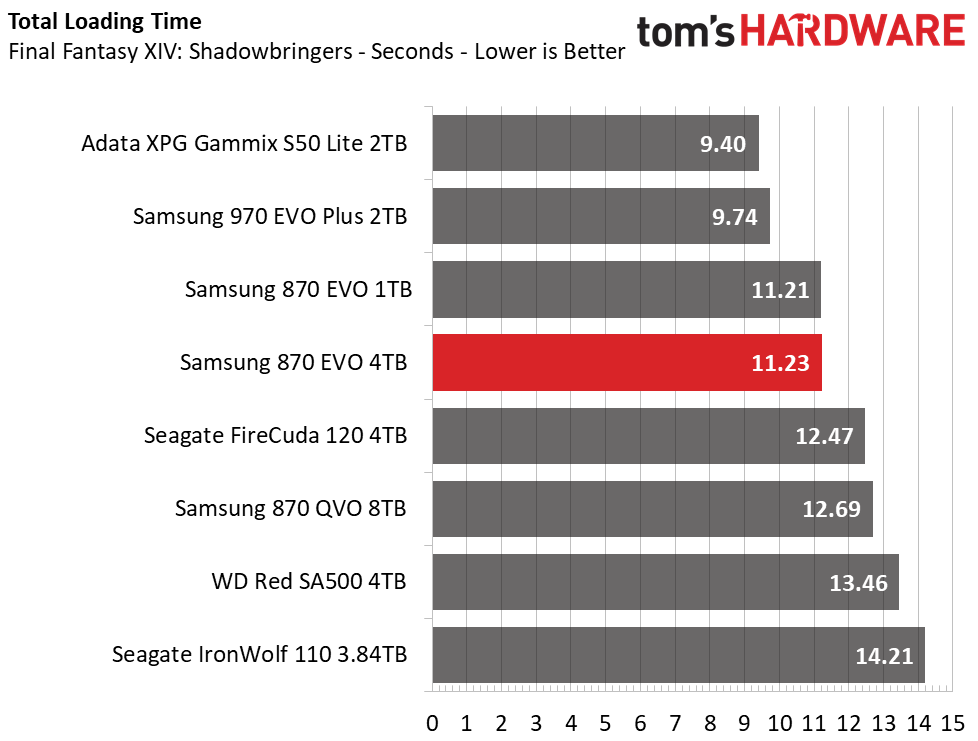Why you can trust Tom's Hardware
Comparison Products
At the 4TB capacity, we put the 870 EVO up against a few other high capacity competitors and its smaller 1TB counterpart. From Seagate, we’ve added in the FireCuda 120 and IronWolf 110. We also added in WD’s SA500, Samsung’s massive 8TB 870 QVO, and like we did in the 1TB pool, we’ve included high-end and budget-friendly NVMe SSDs like Samsung’s 970 EVO Plus and Adata’s XPG Gammix S50 Lite.
Game Scene Loading - Final Fantasy XIV
Final Fantasy XIV Shadowbringers is a free real-world game benchmark that easily and accurately compares game load times without the inaccuracy of using a stopwatch.
Samsung’s 87 EVO delivers fast game loading performance. Samsung’s 870 EVO leads the SATA pack with a similar score to its 1TB counterpart and total loading times that are over a second faster than the Seagate FireCuda.
Transfer Rates – DiskBench
We use the DiskBench storage benchmarking tool to test file transfer performance with a custom dataset. We copy a 50GB dataset including 31,227 files of various types, like pictures, PDFs, and videos to a new folder and then follow-up with a reading test of a newly-written 6.5GB zip file.

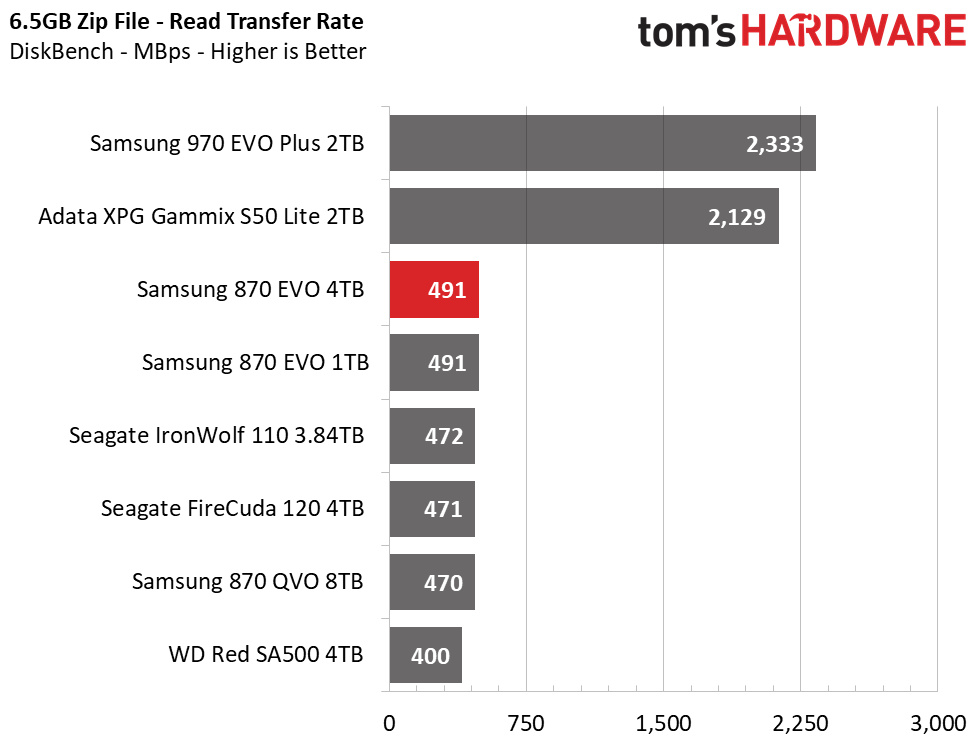
With third place rankings that trail only the NVMe competitors, Samsung’s 870 EVO offers solid copy performance and fast large-file read performance for a SATA 6Gbps SSD.
Trace Testing – PCMark 10 Storage Test
PCMark 10 is a trace-based benchmark that uses a wide-ranging set of real-world traces from popular applications and everyday tasks to measure the performance of storage devices.
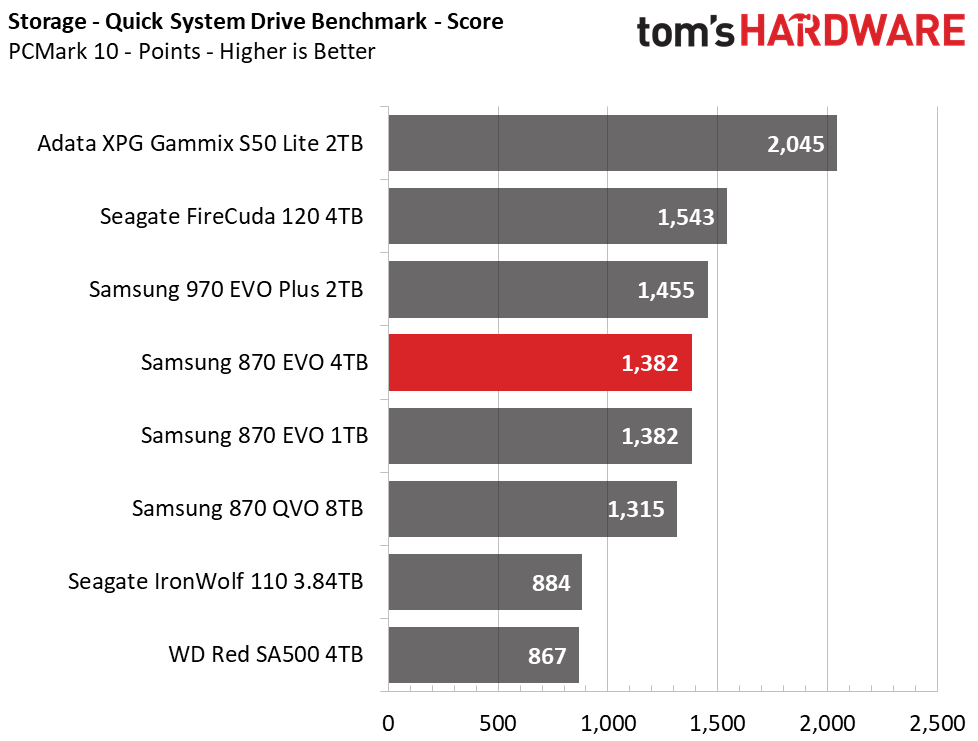
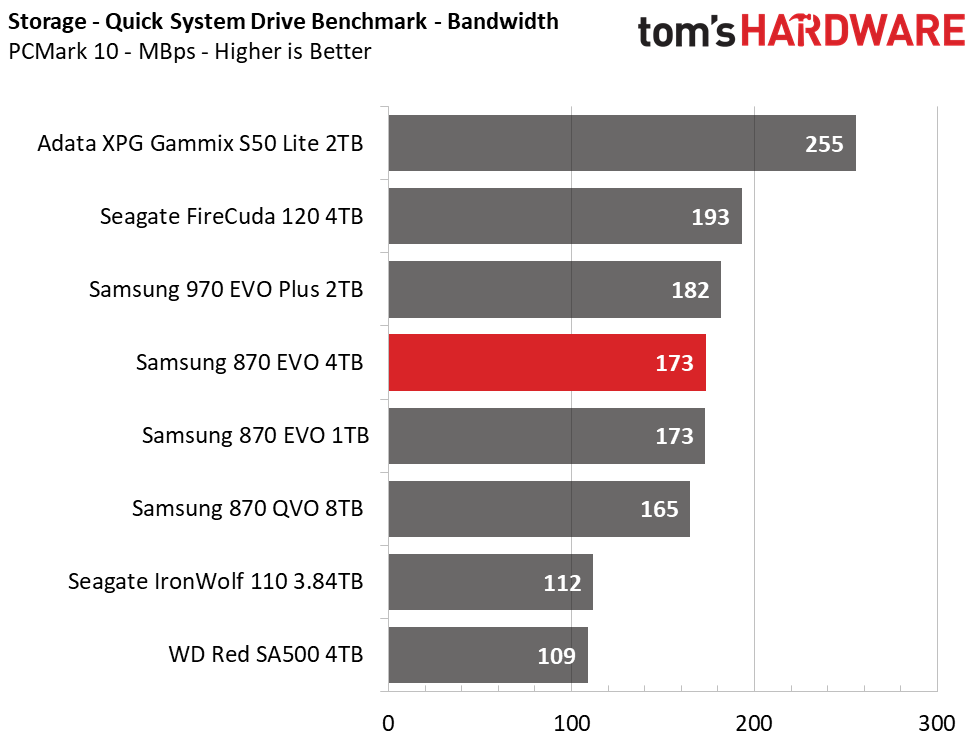
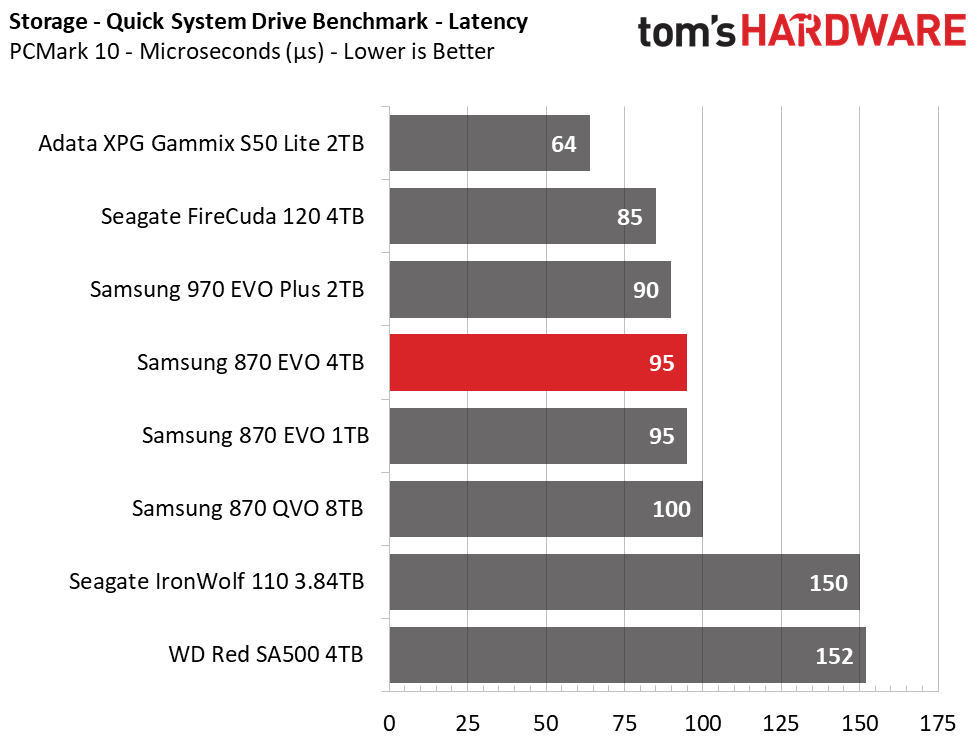
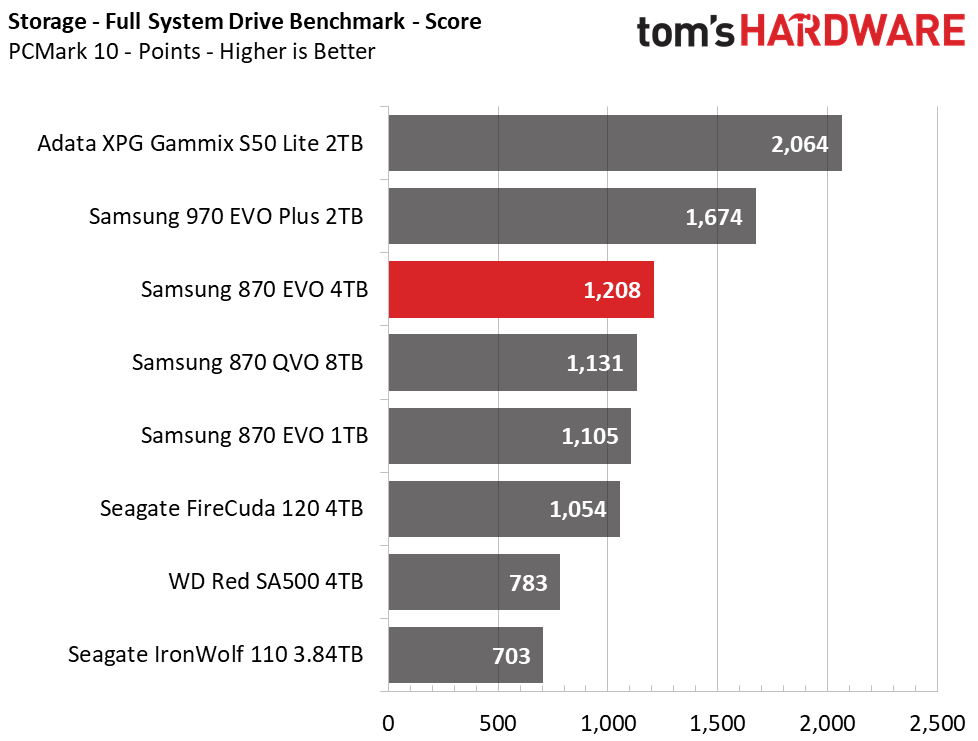
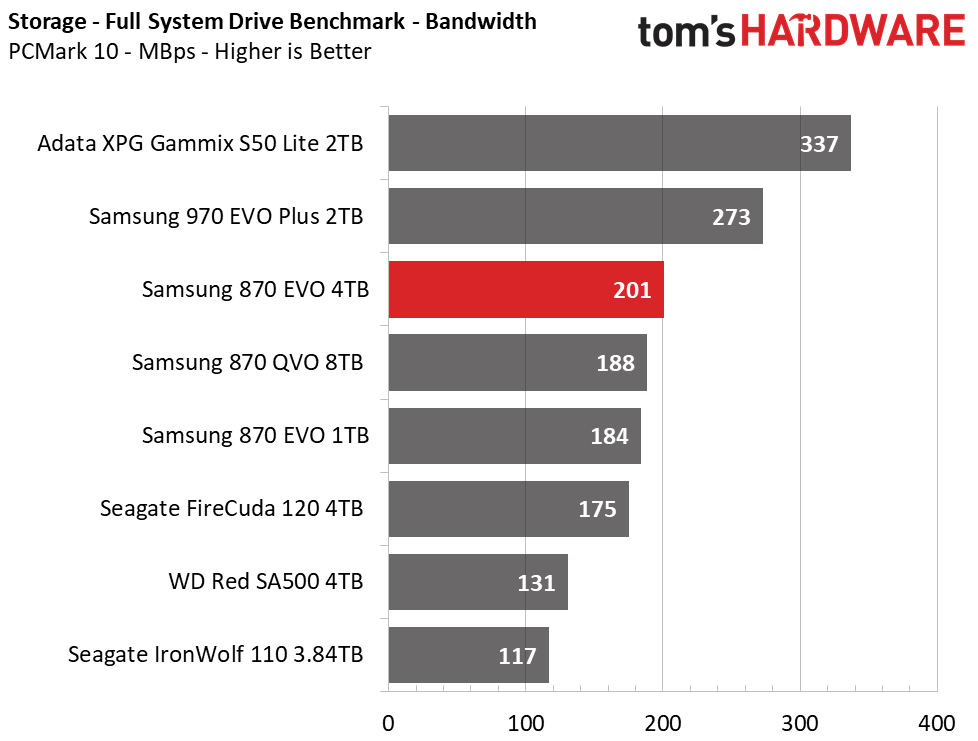
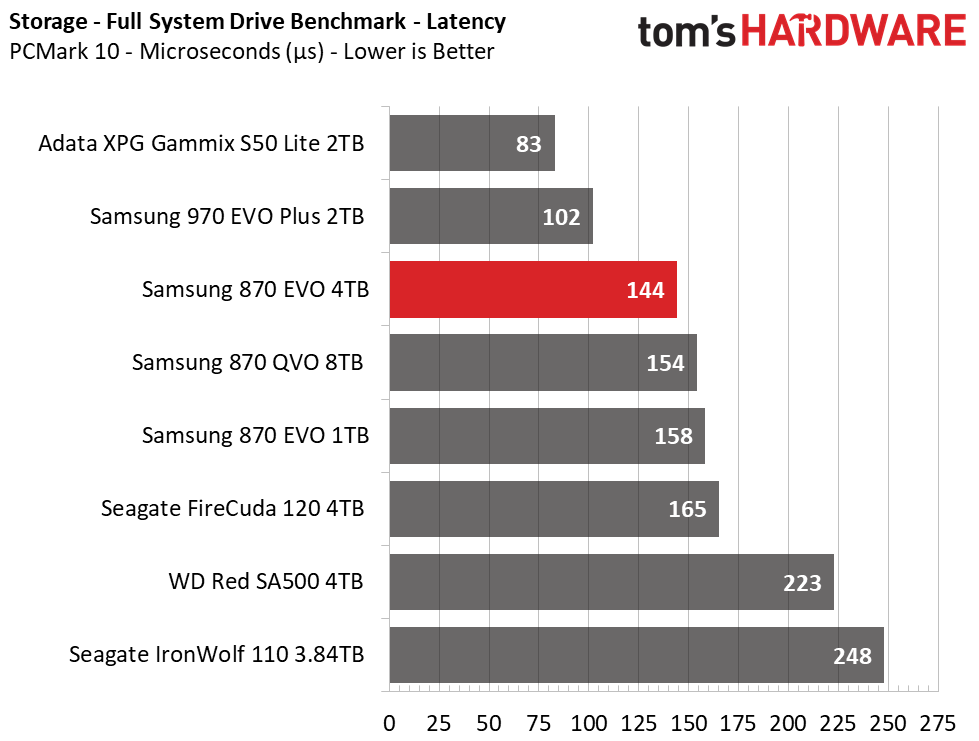
Samsung’s 870 EVO is remarkably better than its predecessor and left the NAS SSDs in the dust in these tests. While Seagate’s FireCuda 120 led the Samsung 870 EVO in the quick system drive benchmark, Samsung’s 870 EVO displayed dominance in the much harder full system drive benchmark, posting the lowest latency of the SATA bunch.
Get Tom's Hardware's best news and in-depth reviews, straight to your inbox.
Synthetic Testing - ATTO / iometer
iometer is an advanced and highly configurable storage benchmarking tool while ATTO is a simple and free application that SSD vendors commonly use to assign sequential performance specifications to their products. Both of these tools give us insight into how the device handles different file sizes.
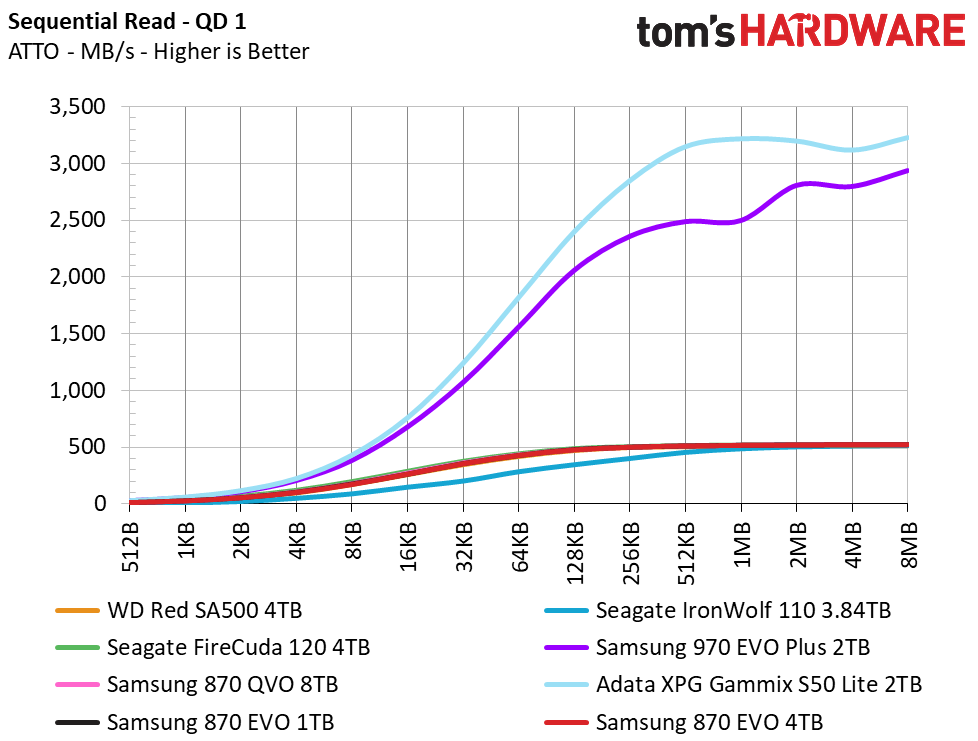
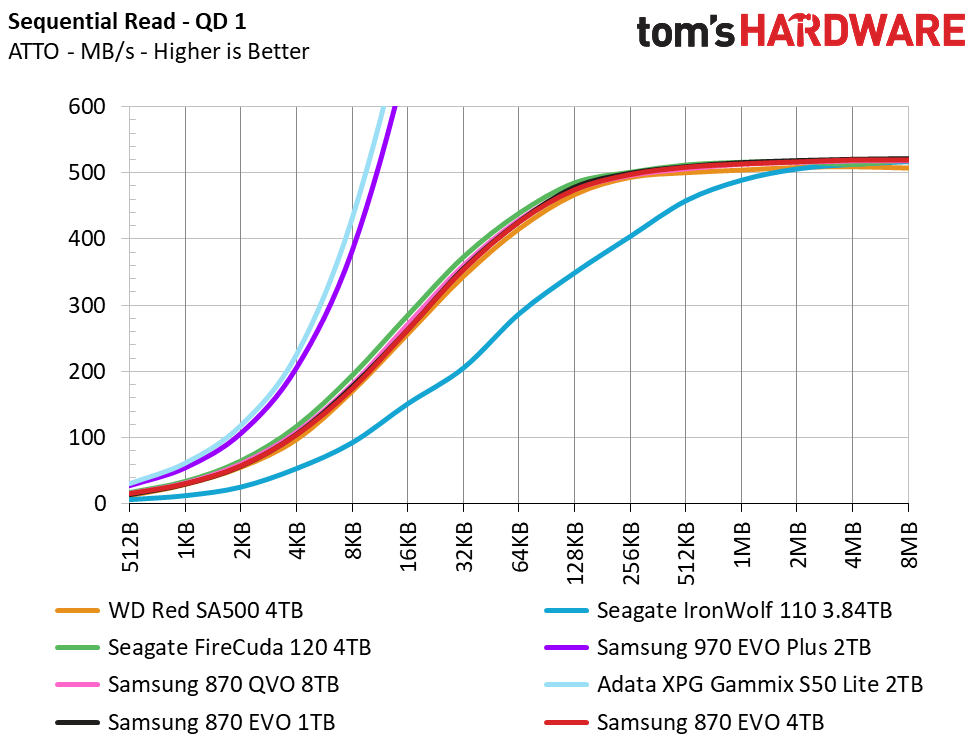
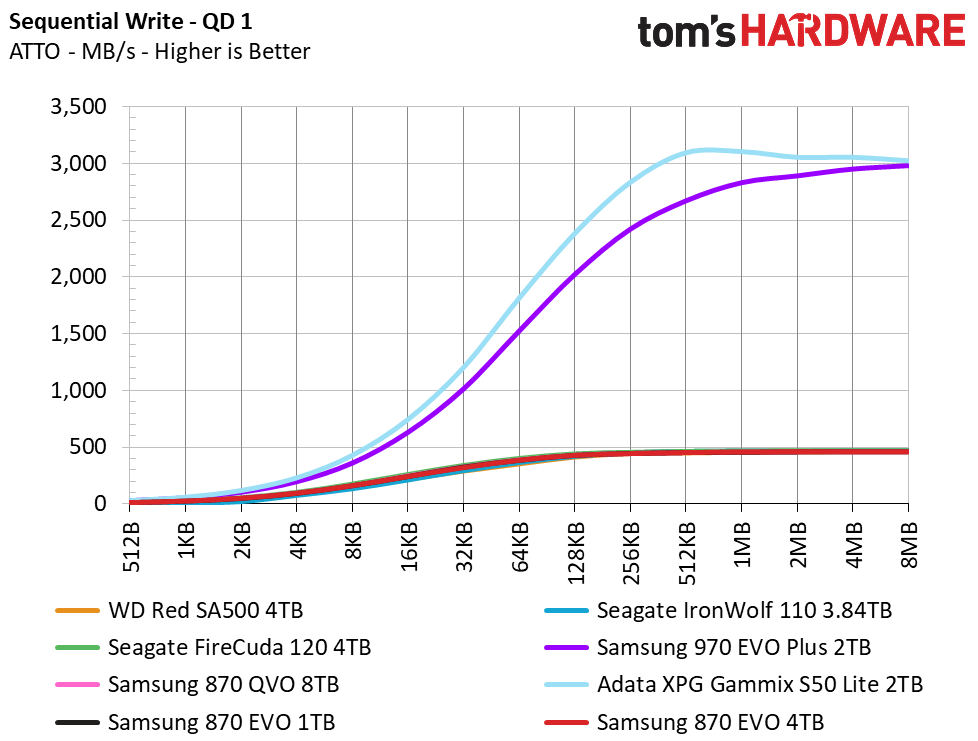
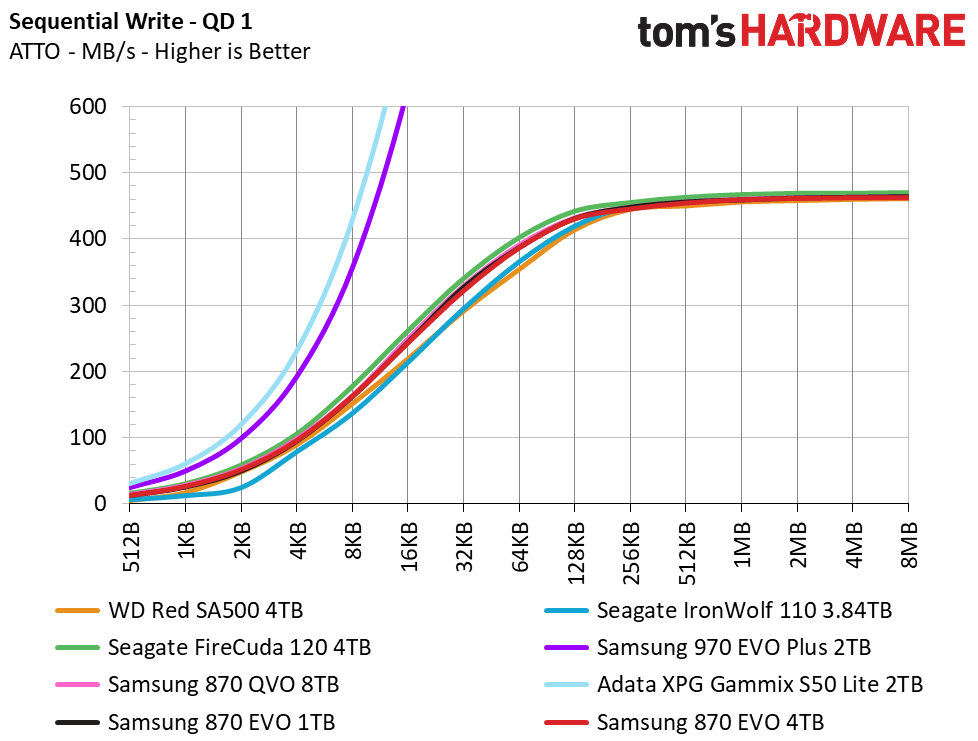
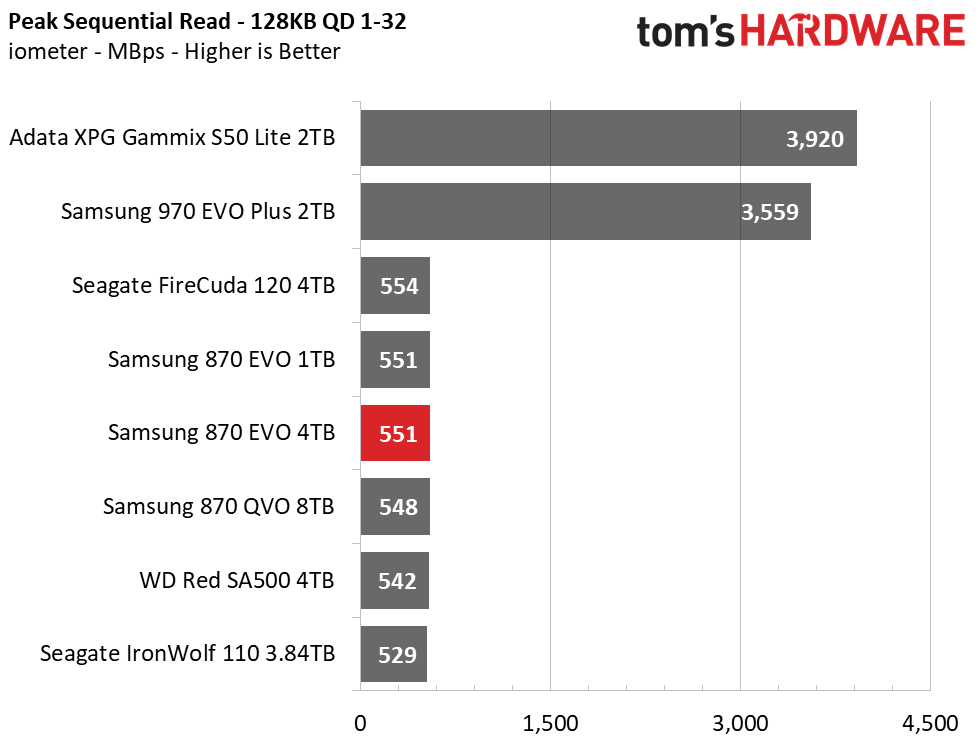
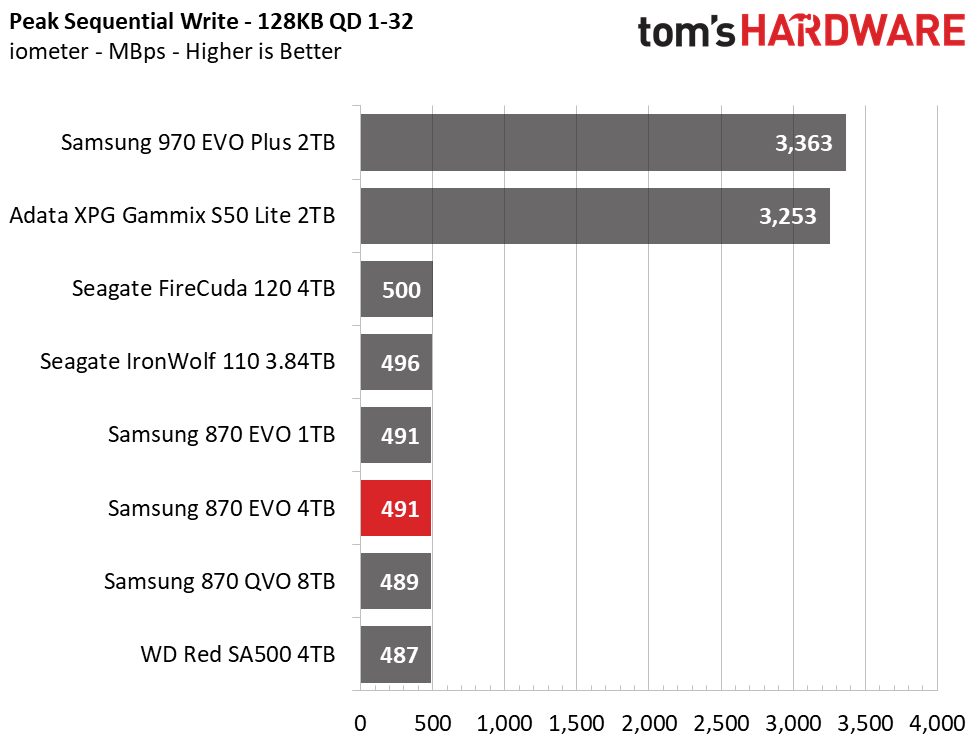
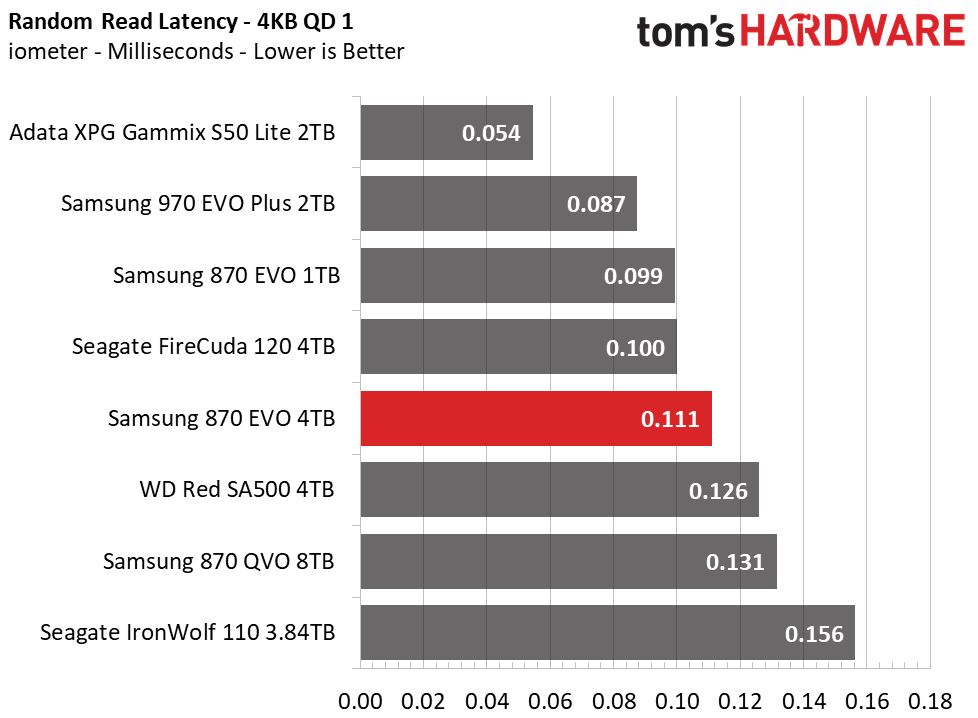
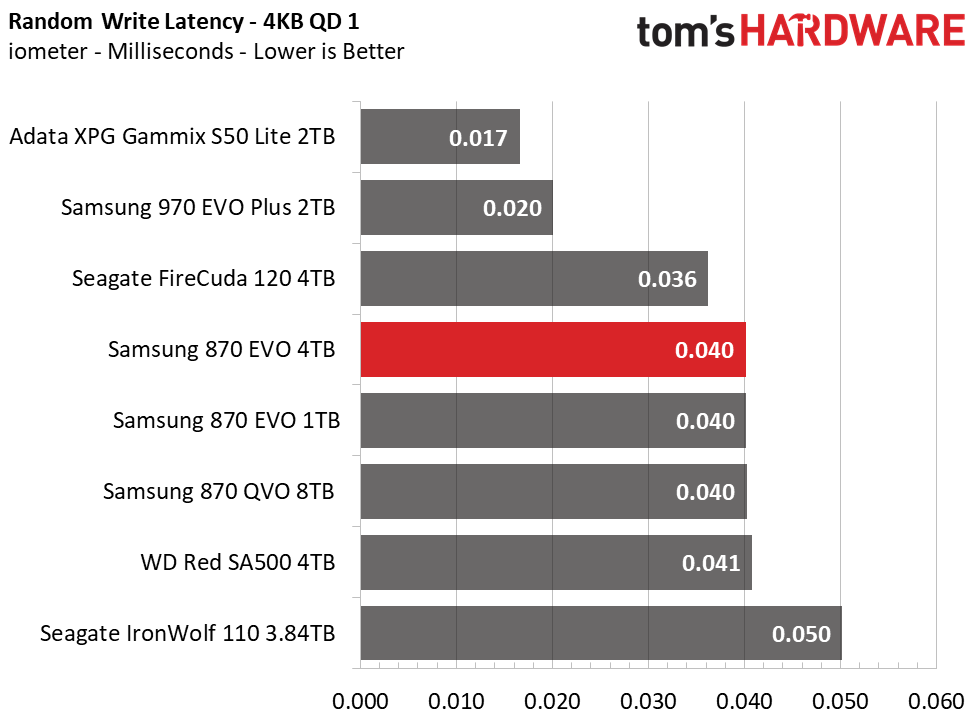
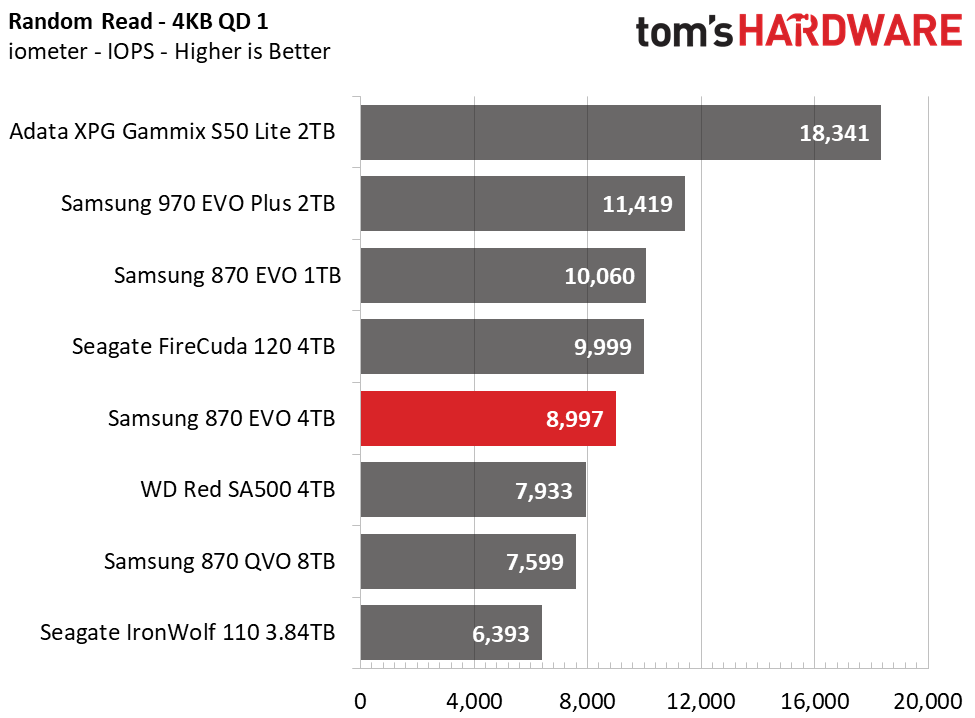
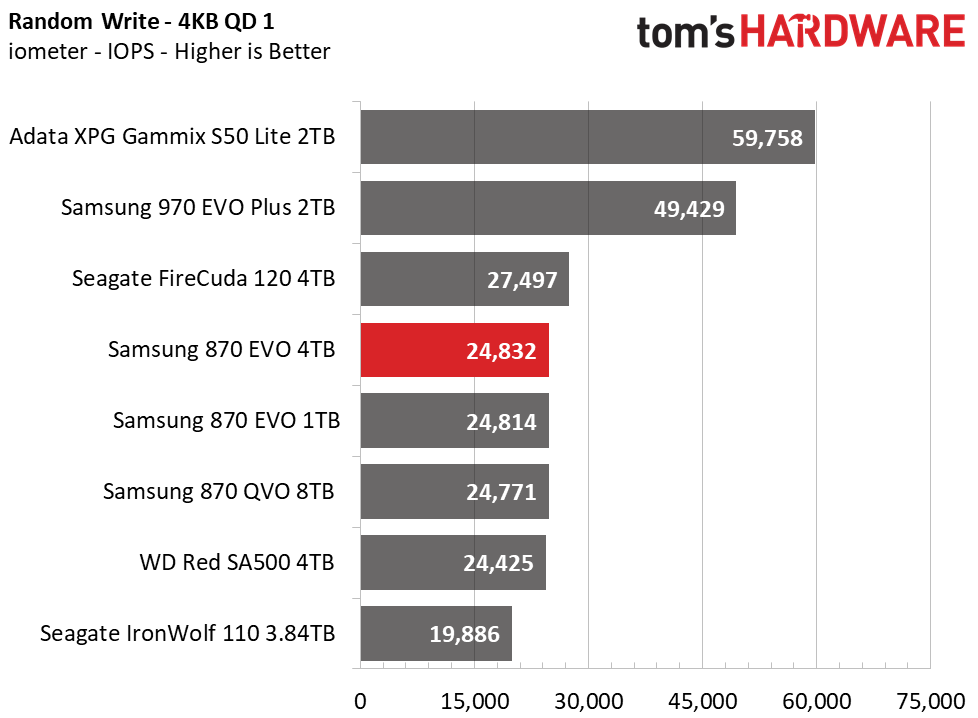
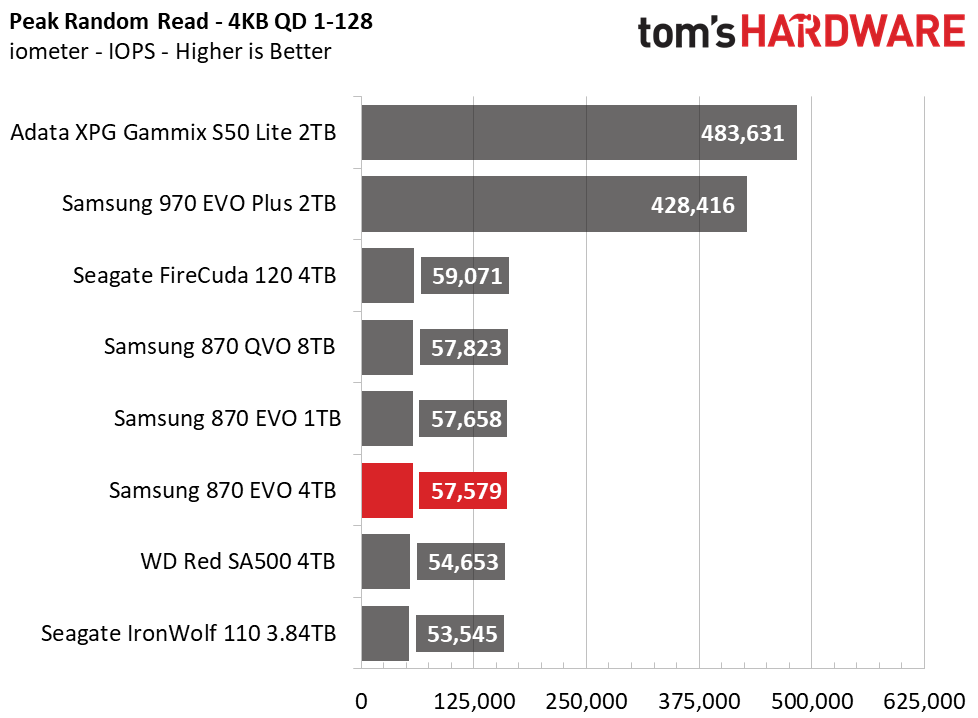

Like the 1TB model, the 4TB 870 EVO delivers solid sequential performance across the board. 4K random latency was slightly higher at 4TB than 1TB, but still, that didn't seem to hold the drive back much during the tougher workloads in our previous benchmarks.
Sustained Write Performance and Cache Recovery
Official write specifications are only part of the performance picture. Most SSDs implement a write cache, which is a fast area of (usually) pseudo-SLC programmed flash that absorbs incoming data. Sustained write speeds can suffer tremendously once the workload spills outside of the cache and into the "native" TLC or QLC flash. We use iometer to hammer the SSD with sequential writes for 15 minutes to measure both the size of the write cache and performance after the cache is saturated. We also monitor cache recovery via multiple idle rounds.
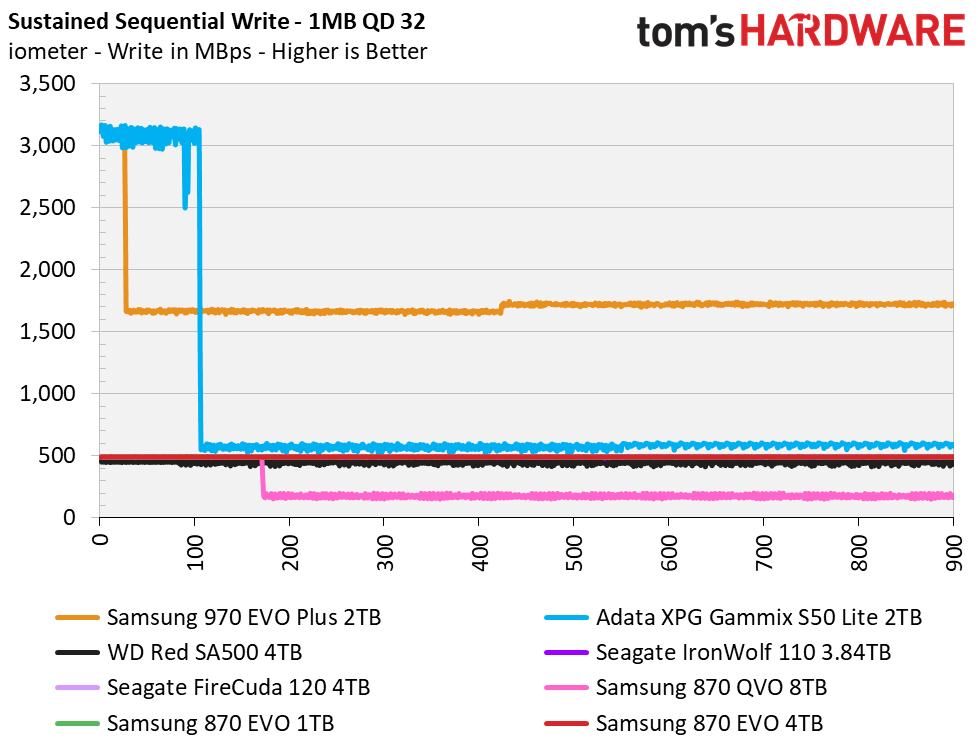
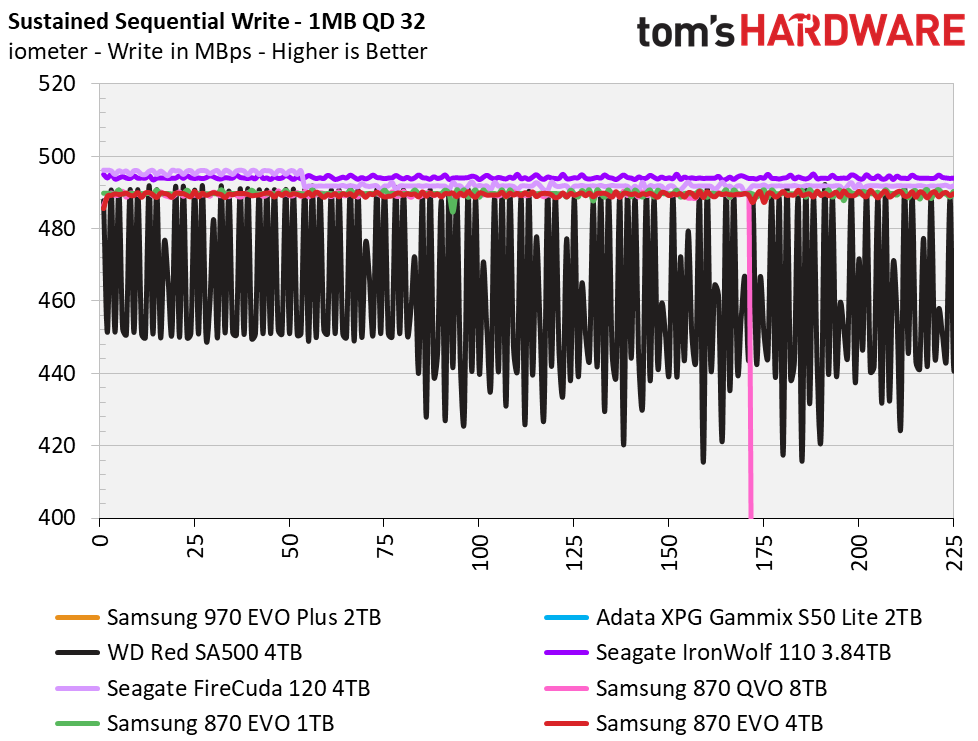

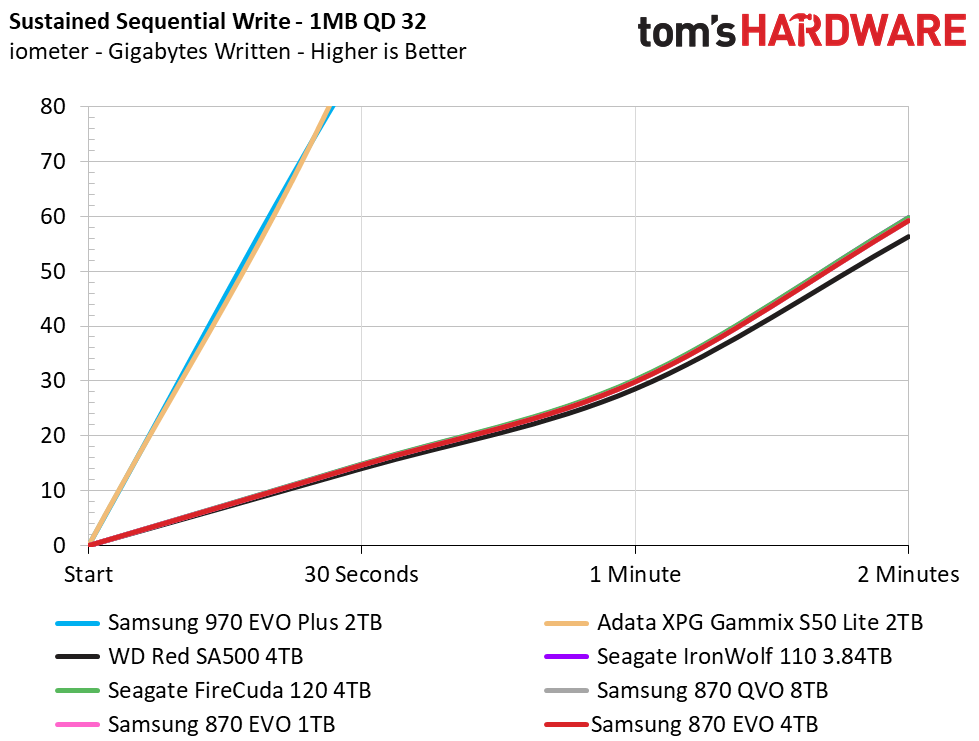
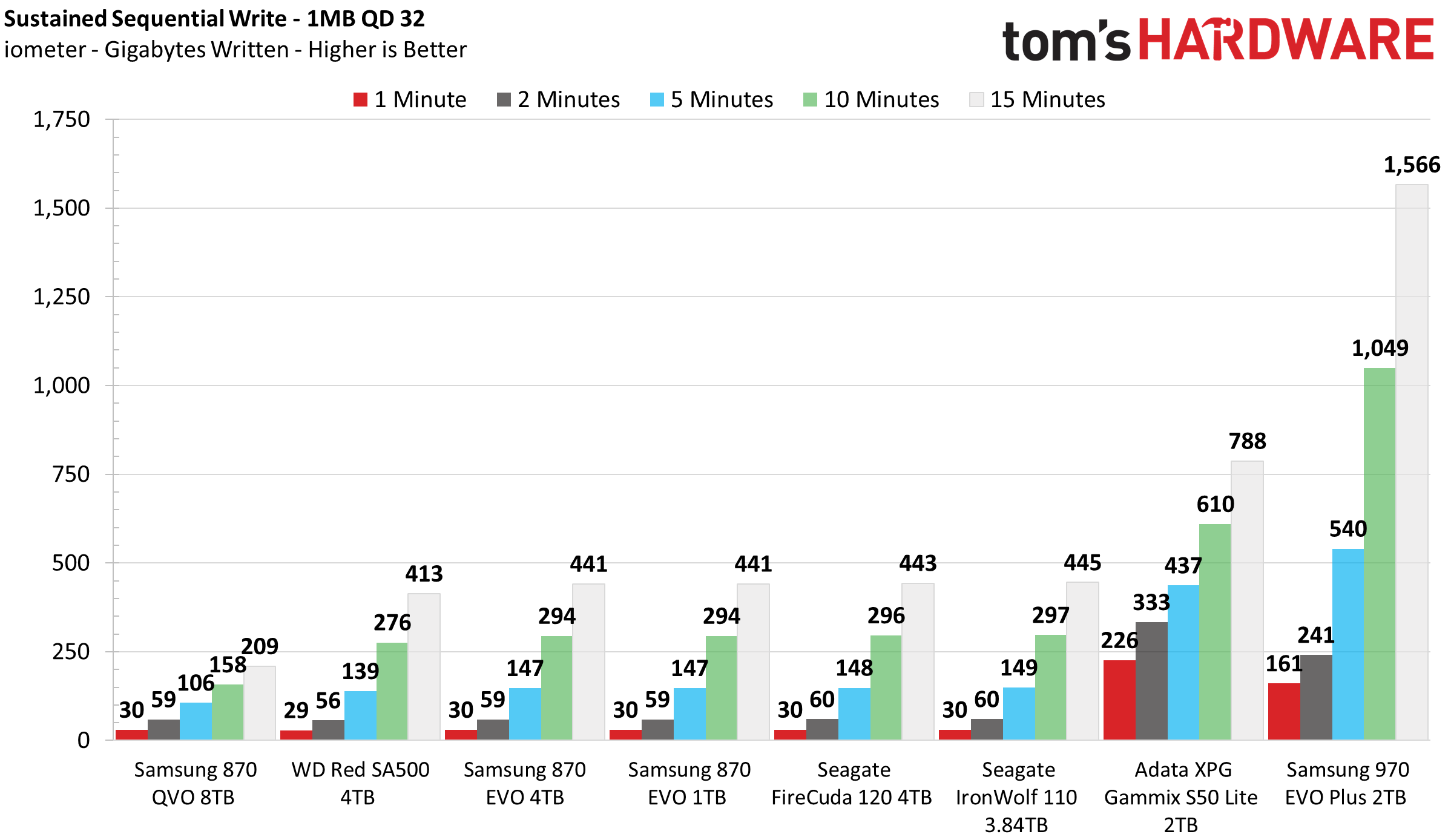
Samsung’s 870 EVO delivers much more consistent write performance than the WD Red SA500 and puts the company’s 870 QVO to shame in sustained write workload performance.
Power Consumption and Temperature
We use the Quarch HD Programmable Power Module to gain a deeper understanding of power characteristics. Idle power consumption is an important aspect to consider, especially if you're looking for a laptop upgrade. Some SSDs can consume watts of power at idle, while better-suited ones sip just milliwatts. Average workload power consumption and max consumption are two other aspects of power consumption, but performance-per-watt is more important. A drive might consume more power during any given workload, but accomplishing a task faster allows the drive to drop into an idle state more quickly, ultimately saving energy.
We also monitor the drive’s temperature via the S.M.A.R.T. data and an IR thermometer to see when (or if) thermal throttling kicks in and how it impacts performance. Bear in mind that results will vary based on the workload and ambient air temperature.
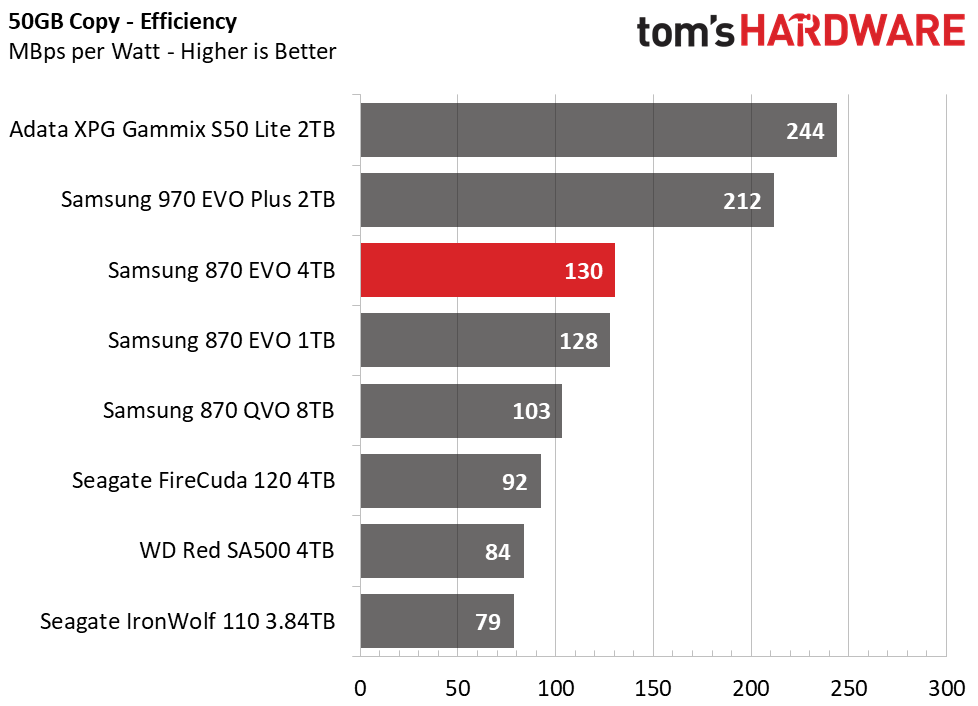
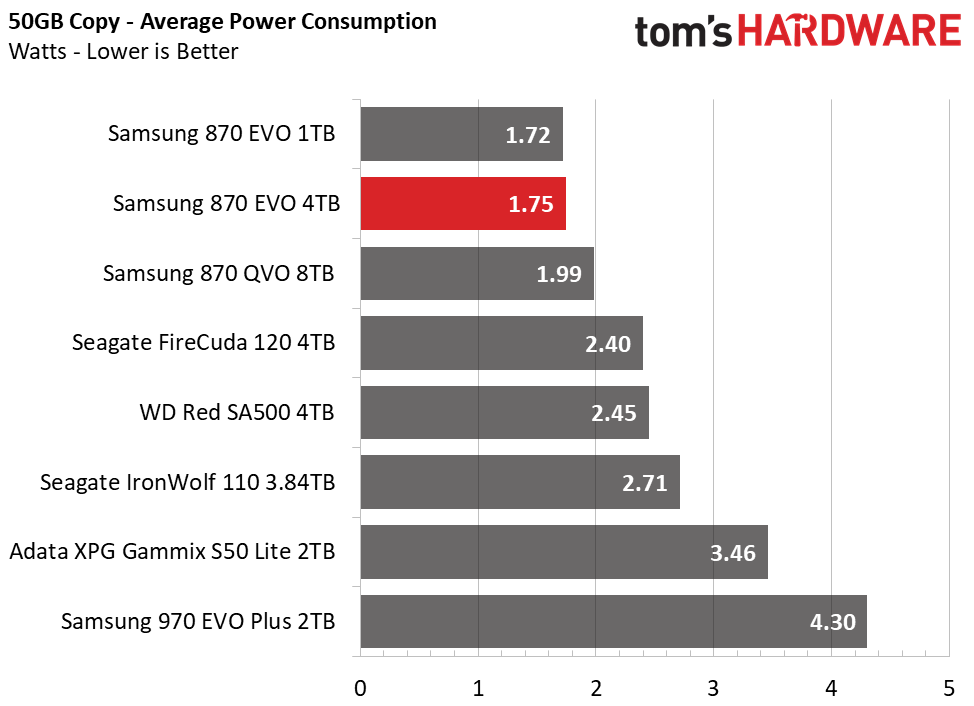
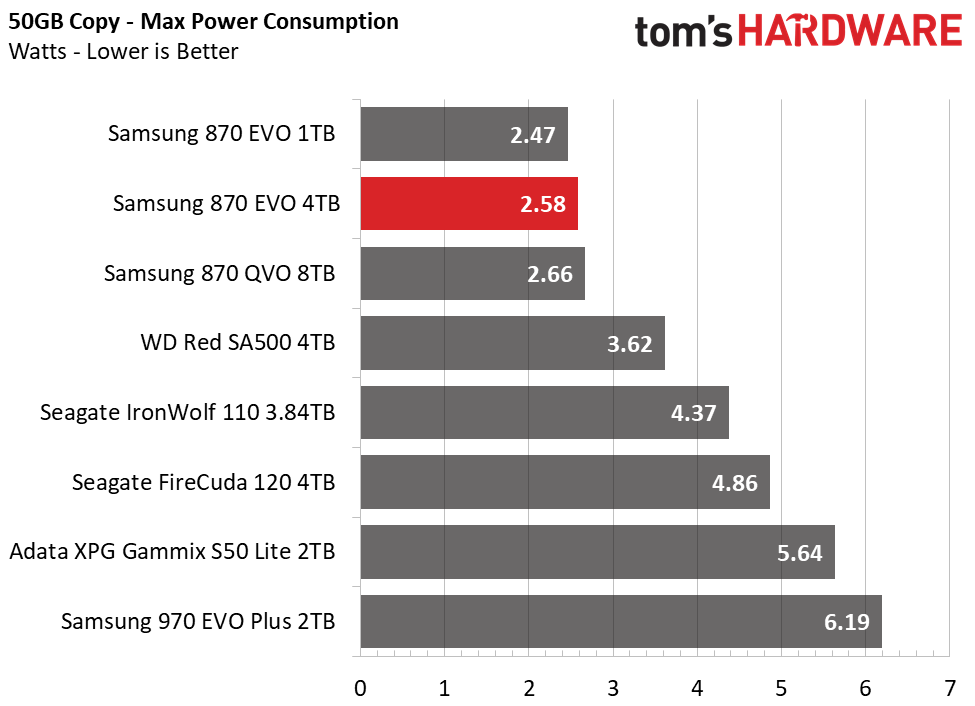
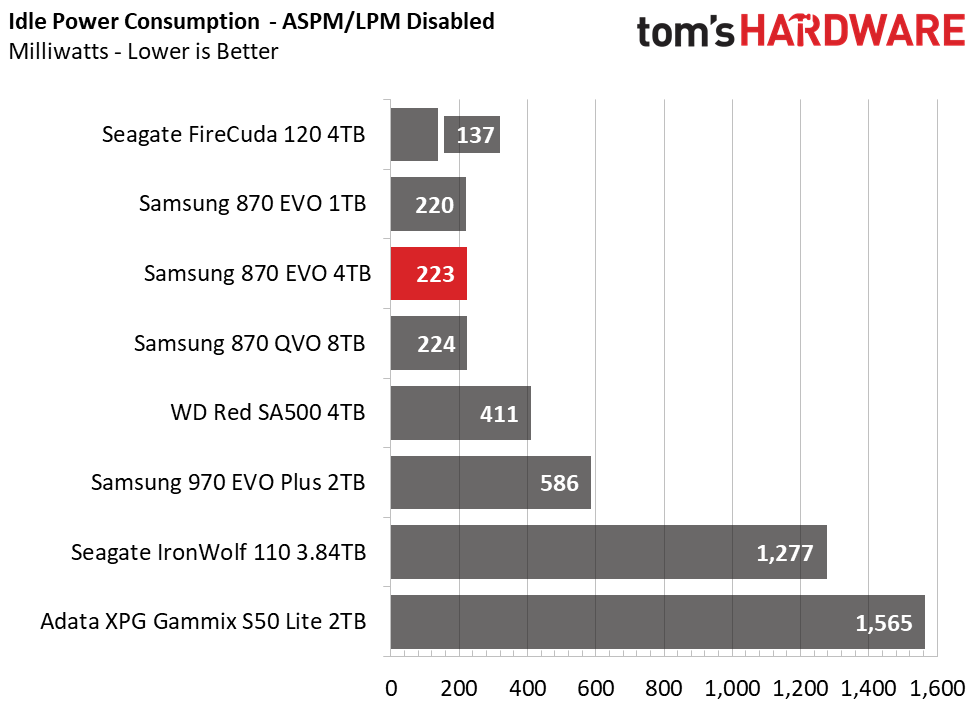
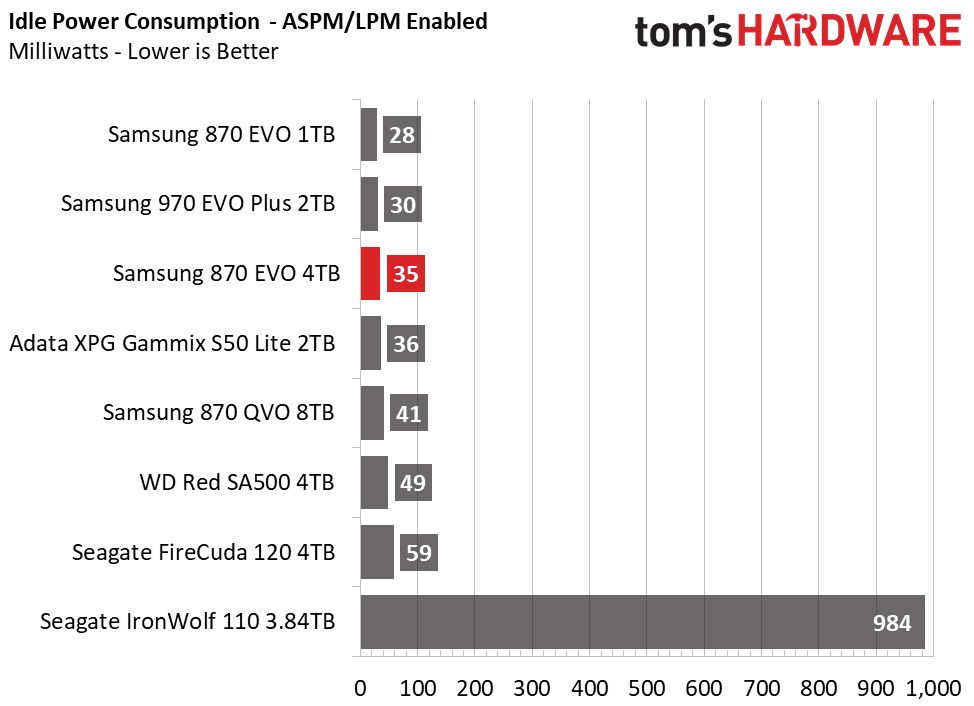
Even though it comes with much more flash, Samsung’s 4TB 870 EVO is just as efficient as the 1TB model. With peak power consumption peaking at just 2.58W and low idle power consumption, the 870 EVO Plus is an efficient SATA SSD. With such low power consumption, there is little concern about encountering thermal throttling.
MORE: Best SSDs
MORE: How We Test HDDs And SSDs
MORE: All SSD Content
Current page: 4TB Performance Results
Prev Page Features and Specifications Next Page 1TB Performance Results
Sean is a Contributing Editor at Tom’s Hardware US, covering storage hardware.
-
mdd1963 It would be nice to see ~ $50 trimmed from the 2 TB variant's price, to be sure...; at the current MSRP, the MX500 would get my nod...Reply
(It would also be nice for someone to make some faster SATA spec ports...SATA4, at 12 Gbps/~1100 MB/sec? Not needed for spinning drives, of course, but If not that, then Intel needs to push a cabled NVME replacement standard so that more mainboards can have more smallish internal ports with sufficient speed, which means much more lanes available. Even one PCI-E 4.0 lane should give 1100 MB/sec, correct? -
Altsuperego Replymdd1963 said:It would be nice to see ~ $50 trimmed from the 2 TB variant's price, to be sure...; at the current MSRP, the MX500 would get my nod...
(It would also be nice for someone to make some faster SATA spec ports...SATA4, at 12 Gbps/~1100 MB/sec? Not needed for spinning drives, of course, but If not that, then Intel needs to push a cabled NVME replacement standard so that more mainboards...
It would be nice, even internal usb3.1 would suffice, but given how fast intel works...
I have to say my 860's real world speeds are way less than advertised and I'm not the only one -
USAFRet Reply
What performance are you getting, and how are you testing this?Altsuperego said:I have to say my 860's real world speeds are way less than advertised and I'm not the only one
All my Samsung 8xx seem to still be doing fine. -
Altsuperego About 200mbps max writes and 40ish for random. Reads are ok. 2tb from amazon. Not sure if I should rma.Reply -
USAFRet Reply
Wow.Altsuperego said:About 200mbps max writes and 40ish for random. Reads are ok. 2tb from amazon. Not sure if I should rma.
All mine are still reporting mid 500's, even the 6 year old 840 EVOs. -
Altsuperego ReplyUSAFRet said:Wow.
All mine are still reporting mid 500's, even the 6 year old 840 EVOs.
Maybe I got a dud because I've also had several -
USAFRet Reply
Testing with what tool? Samsung Magician?Altsuperego said:About 200mbps max writes and 40ish for random. Reads are ok. 2tb from amazon. Not sure if I should rma. -
Co BIY Micron responded to that right quick -Reply
Crucial MX500 2 TB just dropped to $199 at Amazon.
Thanks Samsung! -
ph00ny Good thing about samsung is that they participate in corporate discount programs making this lot cheaper for meReply -
Sergei Tachenov Reply
What would be the point if we have NVMe? It may be a dumb question, but I'm really new to NVMe, and I see SATA as a legacy interface now. Sure thing, there are still rack servers with SATA around, but when talking purely about regular desktop rigs, why the need for SATA at all? I bought my 850 EVO solely because I have no NVMe at all, but for my new rig I plan to replace it with an NVMe one and forget my case even has 2.5"/3.5" mount points. Am I wrong somehow?mdd1963 said:(It would also be nice for someone to make some faster SATA spec ports...SATA4, at 12 Gbps/~1100 MB/sec? Not needed for spinning drives, of course, but If not that, then Intel needs to push a cabled NVME replacement standard so that more mainboards can have more smallish internal ports with sufficient speed, which means much more lanes available. Even one PCI-E 4.0 lane should give 1100 MB/sec, correct?
